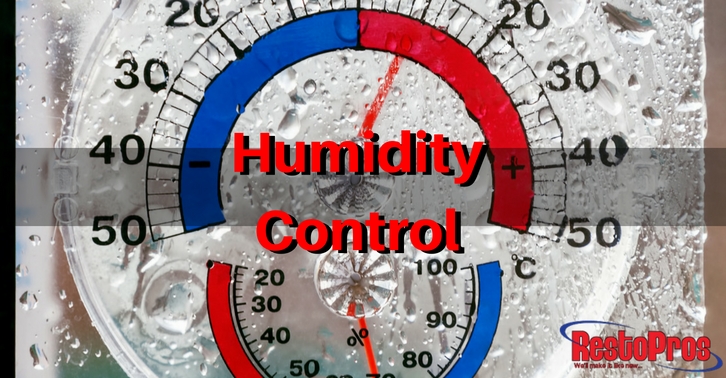 If you’ve read any of our other articles on home protection, mold remediation, and water damage you’ll know that high humidity is mold’s best friend. Mold, mildew, and fungus all require heavy humidity from rain, standing water, or just steam from a shower or cooking to start replicating and spreading throughout your home. Water damage can even originate from a high-humidity environment as temperature differences force water to condense on surfaces and stain or erode the surface.
If you’ve read any of our other articles on home protection, mold remediation, and water damage you’ll know that high humidity is mold’s best friend. Mold, mildew, and fungus all require heavy humidity from rain, standing water, or just steam from a shower or cooking to start replicating and spreading throughout your home. Water damage can even originate from a high-humidity environment as temperature differences force water to condense on surfaces and stain or erode the surface.
But regulating the humidity in your home is a little more important than just preventing water and mold damage. Climate, energy efficiency, and health are all affected by the internal humidity of your home. If you don’t have a smart thermostat that includes one, purchasing a hygrometer to measure relative humidity is a useful tool, especially during the rainy season.,
Temperature and Humidity
Did you know that the weather feels warmer or cooler based on humidity? The drier the air is, the cooler the room feels. How cold a room feels can be up to 5 degrees of difference simply by adjusting the relative humidity of the room.
One of the many systems the human body uses to regulate heat is by cooling off through sweat. Everything on earth is coated with a thin layer of moisture. Fans help to cool us off by circulating air across skin. As fresh air moves into contact with a surface, water is evaporated off of that surface using heat energy to shift into the air. As it does this, heat is taken from the surface. When the air is dry and humidity is low, water evaporates easily, migrating into the air. When the air is already saturated with water, and humidity is high, there’s no way for water to evaporate. In a high humidity environment, everything feels warm and muggy because evaporation is prevented.
This is part of why high humidity makes it so easy for mold and mildew to grow on surfaces. Water won’t evaporate and there’s plenty of water-rich real estate for mold to move into. At the same time, now you know why circulating air with a fan helps to mitigate mold and mildew: by aiding evaporation.
In short, keep the air dry in the summer to avoid mold-growth, decrease the relative temperature in your home, and save on cooling costs.
Ideal Humidity
Buying a hygrometer, dehumidifier, and a humidifier are all useful tactics for controlling the humidity of your home. But what’s the ideal humidity level? 45% is best. Decreasing humidity will save you money on cooling costs and make it unlikely that you’ll have a problem with mold, but reducing humidity too far will have a negative impact on you as well. Low humidity will mean added heating costs in the winter and will lead to dry skin, lips, and a possible sore throat when you wake up in the morning.
Pushing humidity to far above 45%, while it will improve heating costs in the winter, increases the risk of mold and mildew growth. So be cautious when adjusting humidity throughout your home.
Don’t forget to follow RestoPros on Facebook, Twitter, LinkedIn, and Google+ for new Updates, News, and Discounts!
